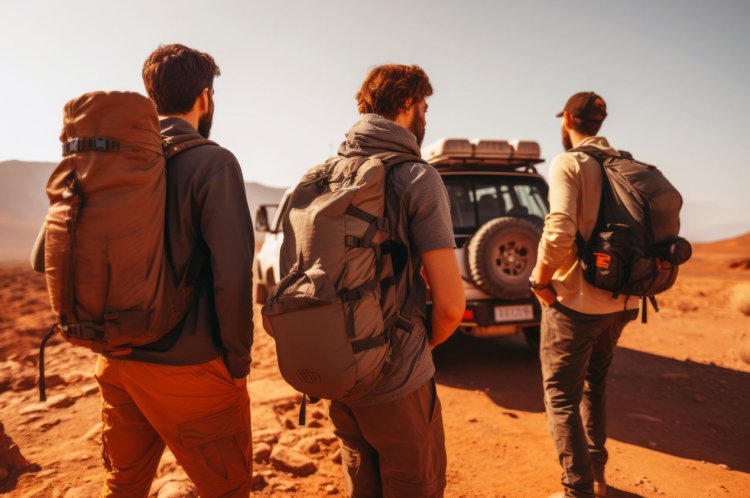Mountain trekking is often surrounded by myths and misconceptions. For those who have never ventured into the wilderness, it can seem like a daunting activity reserved for only the most rugged adventurers. However, the reality of mountain trekking, including activities like Atlas Mountain trekking, can be quite different from the myths that surround it. In this article, we'll separate fact from fiction and explore the truths about mountain trekking.
Myth 1: Mountain Trekking is Only for the Super Fit
One of the most common myths is that mountain trekking is an activity only for the exceptionally fit and athletic. While it’s true that trekking requires a certain level of fitness, you don’t need to be a marathon runner to enjoy it.
Reality: Mountain Trekking for All Fitness Levels
Mountain trekking can be tailored to fit different fitness levels. There are various trails ranging from easy to difficult, allowing beginners and seasoned trekkers alike to find a suitable path. Training and gradual conditioning can help anyone prepare for a trek, making this activity accessible to a wider range of people.
Myth 2: You Need Expensive Gear
Another prevalent myth is that you need to spend a fortune on high-end gear to enjoy mountain trekking. This belief can deter many potential trekkers from even attempting their first hike.
Reality: Quality Gear Without Breaking the Bank
While having the right gear is essential, you don’t need the most expensive items on the market. Focus on quality and comfort rather than price tags. Many affordable brands offer durable and reliable gear suitable for mountain trekking. It's more important to ensure your gear is functional and suited to the environment you'll be trekking in.
Myth 3: It's Dangerous and Risky
Mountain trekking is often seen as a perilous activity filled with dangers and risks. From wild animals to getting lost, the perceived dangers can be overwhelming.
Reality: With Proper Preparation, It’s Safe
Proper preparation and planning can significantly reduce the risks associated with mountain trekking. Knowing the trail, checking weather conditions, and carrying essential supplies can help ensure a safe trekking experience. Guided tours and sticking to marked trails also add layers of safety, making the adventure enjoyable rather than hazardous.
Myth 4: It’s All About Endurance
Many believe that mountain trekking is purely about physical endurance and the ability to push through long, grueling hikes.
Reality: Mental Strength and Enjoyment Play Key Roles
Mountain trekking is as much about mental strength as it is about physical endurance. The ability to enjoy the journey, appreciate nature, and stay motivated often plays a bigger role than sheer physical strength. It's about finding a pace that suits you and enjoying the trek rather than just pushing to complete it.
Myth 5: Trekking is a Solitary Activity
The image of a lone trekker braving the wilderness can make mountain trekking seem like a solitary pursuit, reserved for those who enjoy being alone.
Reality: Trekking Can Be a Social Activity
Mountain trekking can be a highly social activity. Many treks are organized as group events, allowing participants to share experiences, support each other, and forge new friendships. Whether with friends, family, or trekking clubs, the social aspect of trekking adds to its appeal.
Myth 6: You Must Be an Expert Navigator
Some think that only those with expert navigation skills should attempt mountain trekking, fearing they might get lost in the wilderness.
Reality: Trails Are Well-Marked and Maps Are Available
Most popular trekking destinations have well-marked trails and ample resources such as maps and guidebooks to help trekkers navigate. With modern technology, GPS devices and mobile apps also provide reliable navigation assistance, making it easier than ever to stay on course.
Myth 7: It’s Only for Adventure Seekers
There’s a misconception that mountain trekking is only for adrenaline junkies looking for extreme adventures.
Reality: Trekking Offers Various Experiences
Mountain trekking offers a wide range of experiences, from serene walks through lush forests to challenging ascents up rocky peaks. It’s an activity that can cater to both thrill-seekers and those looking for peace and relaxation in nature. There’s something for everyone, regardless of their adventure threshold.
Myth 8: You Have to Travel Far for Great Treks
Many believe that the best trekking experiences are only found in distant, exotic locations.
Reality: Local Trails Can Be Just as Rewarding
While some famous trekking destinations are located in remote parts of the world, there are plenty of fantastic trails closer to home. Local parks, nearby mountains, and regional hiking spots can offer equally rewarding trekking experiences without the need for extensive travel.
Myth 9: It’s Expensive
The belief that mountain trekking is an expensive hobby deters many potential trekkers from exploring this activity.
Reality: Trekking Can Be Budget-Friendly
Mountain trekking doesn’t have to break the bank. By planning wisely, choosing affordable gear, and exploring local trails, trekking can be a budget-friendly way to enjoy nature. There are also many resources available to help you plan cost-effective treks, making this activity accessible to everyone.
Myth 10: It’s Just Walking
Some people dismiss mountain trekking as just an extended walk, underestimating its benefits and challenges.
Reality: Trekking Is a Full-Body Workout and More
Mountain trekking is far more than just walking. It involves navigating varied terrain, which can provide a full-body workout. Additionally, trekking offers numerous benefits, including improved cardiovascular health, increased stamina, and mental well-being. The combination of physical exertion and the therapeutic effects of nature makes trekking a holistic exercise.
Conclusion
Mountain trekking is an enriching activity that offers numerous benefits, from physical fitness to mental well-being. By debunking these common myths, we hope to encourage more people to explore the joys of trekking. Remember, mountain trekking is for everyone, regardless of fitness level, budget, or experience. With proper preparation and an open mind, the mountains await to offer their wonders to all who seek them.










